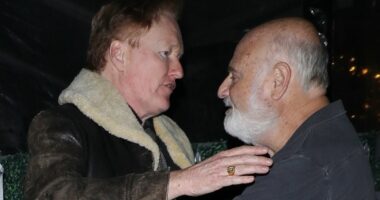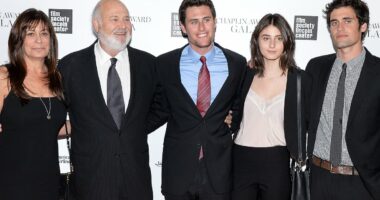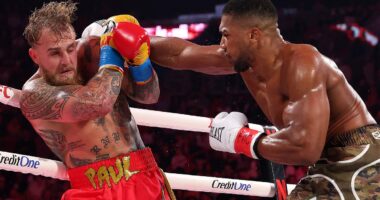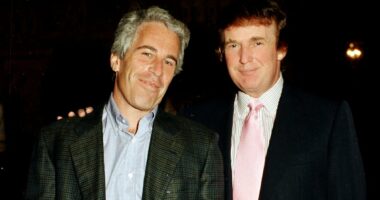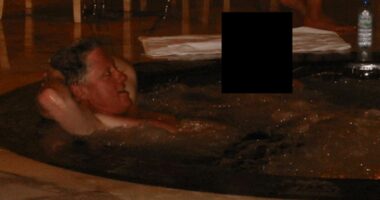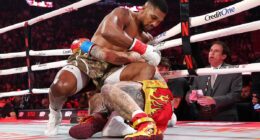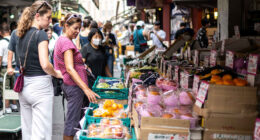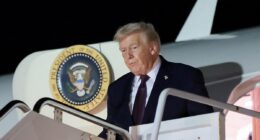Share this @internewscast.com
Despite grappling with a cost-of-living crisis, Australians continue to indulge in purchases ranging from clothing and home appliances to gym memberships.
According to new data from the Australian Bureau of Statistics (ABS) released on Monday, household spending on goods and services has surged by 2.7% compared to last year. This marks the most robust annual growth since the March 2024 quarter.
In September, household spending inched up by 0.2%, following a stagnant August and a 0.4% increase in July.
Overall, household spending has climbed 5.1% over the past year, surpassing the inflation rate, which stands at 2.7%.
Consumer spending is a key factor in the Reserve Bank of Australia’s (RBA) monetary policy, especially in determining interest rates.
Harry Murphy Cruise, head of economic research and global trade at Oxford Economics, shared with NewsWire that these latest figures provide the RBA with further justification to maintain current interest rates during their upcoming meeting on Tuesday.
‘The fact we have spending at a fairly solid pace suggests households still have a genuine appetite to spend,’ he said.
Mr Murphy Cruise added consumer spending could be stronger than the figures show, as the ABS called out a strong fall in alcoholic beverages and tobacco sales.

New figures show the amount of goods and services households are buying has risen, with markets broadly expecting rates to remain on hold after last week’s inflation data
‘The surge in black-market tobacco sales in recent years has artificially dragged measured spending lower – as consumers shift from legal to illegal purchases, recorded spending falls even though total outlays on tobacco haven’t changed,’ he said.
‘Adjusting for this, household spending volumes rose 0.4 per cent in the quarter – twice the headline pace.’
ABS head of business statistics Tom Lay said spending on non-discretionary items had driven the overall rise, as households spent more on food, health, and petrol.
‘Household spending volumes rose for the fifth quarter in a row,’ he said.
‘Discretionary spending was flat for September, with higher spending on recreation and culture being offset by falls for air travel and accommodation.’
Annual spending on beauty products and services, insurance and niche consumer goods like jewelry were up (+8.7 per cent) in the 12 months to September.
Spending on services was 7.2 per cent higher than September 2024, while spending on goods such as electronics and clothing was up 3.4 per cent.
Household spending grew in four of the eight states and territories in September.

RBA governor Michele Bullock (pictured) will hand down the rates decision on Melbourne Cup Day
New South Wales (+0.8 per cent) and South Australia (+0.6 per cent) recorded the largest growth rates, while the Australian Capital Territory (-2.4 per cent) had the biggest fall.
The latest figures come after last week’s shock inflation figures, which dashed any chance of reprieve from the RBA.
Underlying inflation has risen three per cent over the year to September, the highest quarterly spike since March 2023.
The surprise uptick has all but ruled out a rate cut from the Reserve Bank when it meets on Tuesday, with economists now warning it may need to hold firm, or even hike rates again, to keep inflation in check.
AMP deputy chief economist Diana Mousina said the inflation figures caught many economists off guard, marking the first increase since the peak of the inflation crisis in December 2022.
She expects the RBA will hold the cash rate at 3.6 per cent at both the upcoming November and December meetings but remains optimistic rates would be cut next year.
‘Another rate cut had been expected, especially as the September labour force figures showed the unemployment rate rising to 4.5 per cent from 4.3 per cent in the prior month, and above the RBA’s forecasts,’ she said.
‘Inflation can still track back down into the RBA’s target band rather than running above it, but it will take longer to get there than we had expected.’


